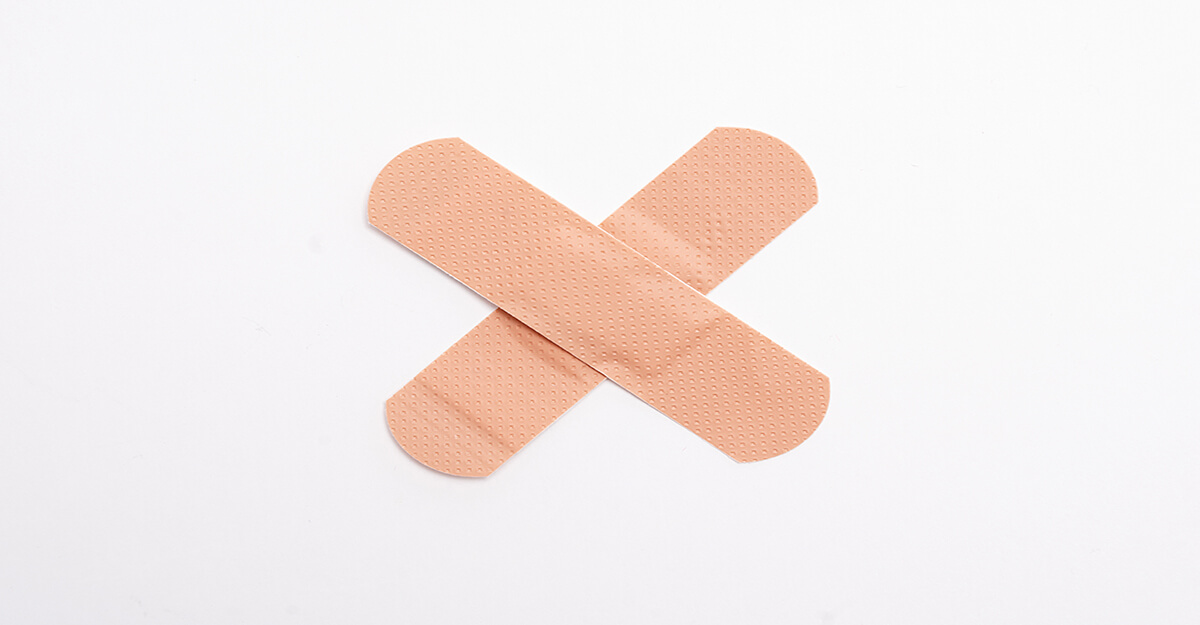Let’s say the wound you are working on is not healing. Why is the normal healing process not occurring?
You should approach healing not only by what you see, but also by what you can’t see happening at the cellular and molecular level.
To understand the factors that delay wound healing, you must first understand what normal healing is.
What Does the Normal Healing Process Look Like?
The normal healing process goes through phases in a timely fashion. Your goal for any wound should be to heal it as quickly and painlessly as possible.
Why quickly? If given enough time, any open wound could have an increase in bacterial contamination that could ultimately lead to an infection.
Why painlessly? Minimizing your patient’s discomfort will improve their quality of life. Pain also increases the chance of infection.
Pain can lead to the production of catecholamines that are vasoconstrictors. This vasoconstriction effect leads to hypoperfusion of the wound resulting in less phagocytes, oxygen, and nutrients available for the killing of bacteria.
The clinical benchmarks of normal wound healing include:
- A 10% reduction in the cross-sectional area (length X width) per week
- An overall increase in the amount of and the percentage of viable tissue
If your wound is not meeting these benchmarks, it is not healing.
Risk Factors for Impaired Wound Healing
Multiple factors that can delay wound healing, including:
- Etiology (cause) of the wound
- Systemic factors
- Local and other factors
Wound etiology
To heal a wound, the cause of that wound needs to be eliminated or accommodated, otherwise the wound will persist. If a wound is not healing:
- Reassess if you have the correct etiology.
- If you do have the correct cause, assess if you are effectively eliminating or accommodating the cause of the wound.
- If you do not have the correct cause, change the therapy to eliminate or accommodate this “new” cause.
Systemic factors
How can systemic factors impact wound healing? An immune-compromised patient, such as patients with cancer or diabetes, might experience a slower wound healing process. Certain medications might inhibit the wound healing process, including:
- Steroid therapy, which decreases phagocytosis
- Anti-inflammatory therapy, which decreases the needed inflammatory response (However, keep in mind that the therapy may also be beneficial by decreasing pain and its resulting vasoconstriction.)
- Chemotherapy, which may decrease available leukocytes resulting in an increased risk of infection. Anemia may occasionally develop, resulting in local hypoxia of the wound tissue and/or thrombocytopenia which might increase the chances for bleeding.
Peripheral Arterial Disease (PAD)
PAD can lead to hypoperfusion of the wound bed decreasing the cells of repair, oxygen, and/or nutrients required for wound healing.
How Does Nutrition Affect Wound Healing?
Malnutrition has a negative effect on wound healing by providing less substrate available for the reparative process.
The associated weakness of the patient can lead to less mobility resulting in local vasoconstriction due to an increase pressure on the wound. In addition to malnutrition affecting mobility, non-nutritional etiologies also cause decreased mobility like that associated with acute trauma or long term immobility.
Obesity is another factor and can lead to hypoperfusion and hypoxia of the tissue resulting in both an increase in the development of a wound, as well as the decrease in the healing rate of that wound.
Local Factors That Affect Wound Healing
Some local factors that might be accountable for your patient’s non-healing wound include:
- The inability to eliminate or accommodate the cause of the wound
- The inability to maintain a moist healing environment
- Resultant hypoperfusion of the wound by various mechanisms
- The inability to effectively remove non-viable tissue
- The lack of wound healing stimulatory molecules
- The inability to recognize an ongoing infection
- The inability to treat an ongoing infection
- The wound has poorly functioning cells that are common in chronic wounds
- The wound’s exudate containing a high concentration of proteolytic enzymes that have multiple negative effects on the healing process
Other Factors That Delay Wound Healing
Wound healing can be delayed if your patient:
- Is noncompliant or does not adhere to the recommended therapy
- Has a false perception regarding the speed of wound healing
- Has logistical barriers such as distance to the clinic or transportation issues
Wound healing delays also can result if the healthcare provider:
- Lacks knowledge of Standard of Care therapy
- Incorrectly utilizes therapy
- Works at facility that does not provide appropriate Standard of Care wound therapy
As you can see, there are many reasons why the wound you are attempting to heal is not progressing.
When dealing with a wound that is not healing, review the concepts addressed here to identify the cause and correct it in order to heal that wound as quickly and painlessly as possible.
Take our engaging, evidence-based Wound Care Certification Courses for nurse, registered dietitians, physical therapists, and more professionals. Choose the format that suits you and get access to tools to help you ace your exam.
What do you think?

